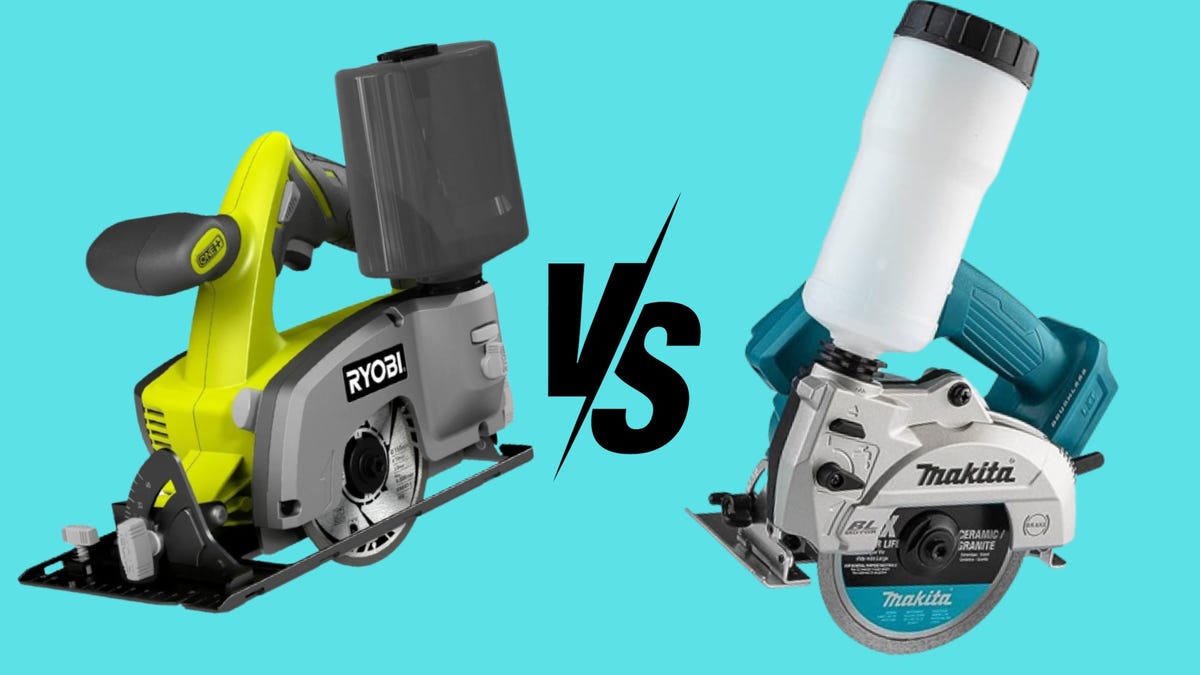How to Choose Between Makita and Ryobi Battery Powered Wet Saw

In the DIY home improvement industry, cutting tiles can be especially challenging and safe. Since the dust it creates can be harmful to your lungs, and the heat generated by cutting can also cause problems with the tiles and your tools, a wet saw is the best and safest option for this task. But wet tile saws can be so expensive that for smaller jobs, using the DIY method won’t make sense from a cost perspective. But now there are smaller, battery-powered wet saws on the market, and they may be the right choice for your project. Here’s what you need to know about Ryobi and Makita wet saws and how they compare to a traditional wet saw.
A safety note when cutting tile and masonry.
Before choosing a tile cutter for your project, it is important to remember that using a tile cutter can be extremely dangerous if your table or cutting surface is unstable and if the tiles are not held firmly in place. Whenever you use a wet saw, you should use strong clamps to hold the tiles in place and wear safety glasses for safety.
The Makita wet mortar saw allows you to make quick, precise cuts.
The Makita XCC01Z Tile and Masonry Hand Saw has a maximum cutting depth of 1-9/16 inches and a total weight (including battery) of 6.6 pounds. The depth of cut is a sixteenth of an inch less than the Ryobi, so you’ll need to take into account the thickness of the material you plan to use. This Makita is a more expensive tool, with the tool-only kit costing $255. Although it has good ratings on Amazon, the main complaints from customers are that the water tank leaks and requires Teflon tape to seal it. Additionally, due to its compact design, this saw does not support a curved blade for specialty cuts. Customers cited the saw’s ease of use as the main reason for their positive reviews. Most said it worked well, but some disagreed with the price and cost of the batteries.
Because this tool is longer than most hand saws (over 11 inches), it can be a little bulky, but the overall design allows for quick, precise cuts.
The Ryobi wet saw is a less expensive alternative for smaller jobs.
The Ryobi ONE+ HP Handheld Wet Tile and Masonry Saw can cut 1-5 ⁄ 8 inches deep, which is a sixteenth of an inch deeper than the Makita, but with the battery it weighs over a pound more at 7.8 pounds. If you plan on making multiple cuts, the extra weight may be an issue, but at $199 it comes with a hose to connect to a water source and a bottle for portability, making it a cheaper choice. The Ryobi Wet Cutting Saw has mixed reviews on Amazon, with buyers citing issues with the saw’s footplate, which makes it difficult to make more precise cuts due to its size, and the support design makes it difficult to see your marks. . Most said the saw was not powerful enough, but good for small jobs.
Because this tool is a bit heavier, getting used to the way it balances in your hand compared to other types of hand saws can be challenging, but the simplicity of the design allows for a much lighter setup than a traditional wet saw.
Which cordless wet saw should you choose?
Overall, both saws will get the job done. The Makita makes cutting easier and provides a little more power, while the Ryobi saw’s price and greater maximum depth are its main selling points. Neither tool can completely replace a traditional wet saw, especially for larger tile jobs, as these smaller wet saws will make it more difficult to make many small cuts or cuts in thicker materials. However, the hand-held, battery-powered design of these two saws is a game changer for DIY tilers everywhere, allowing you to make cuts without the hassle and expense of setting up a wet tile table saw.